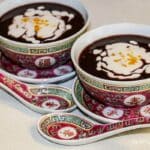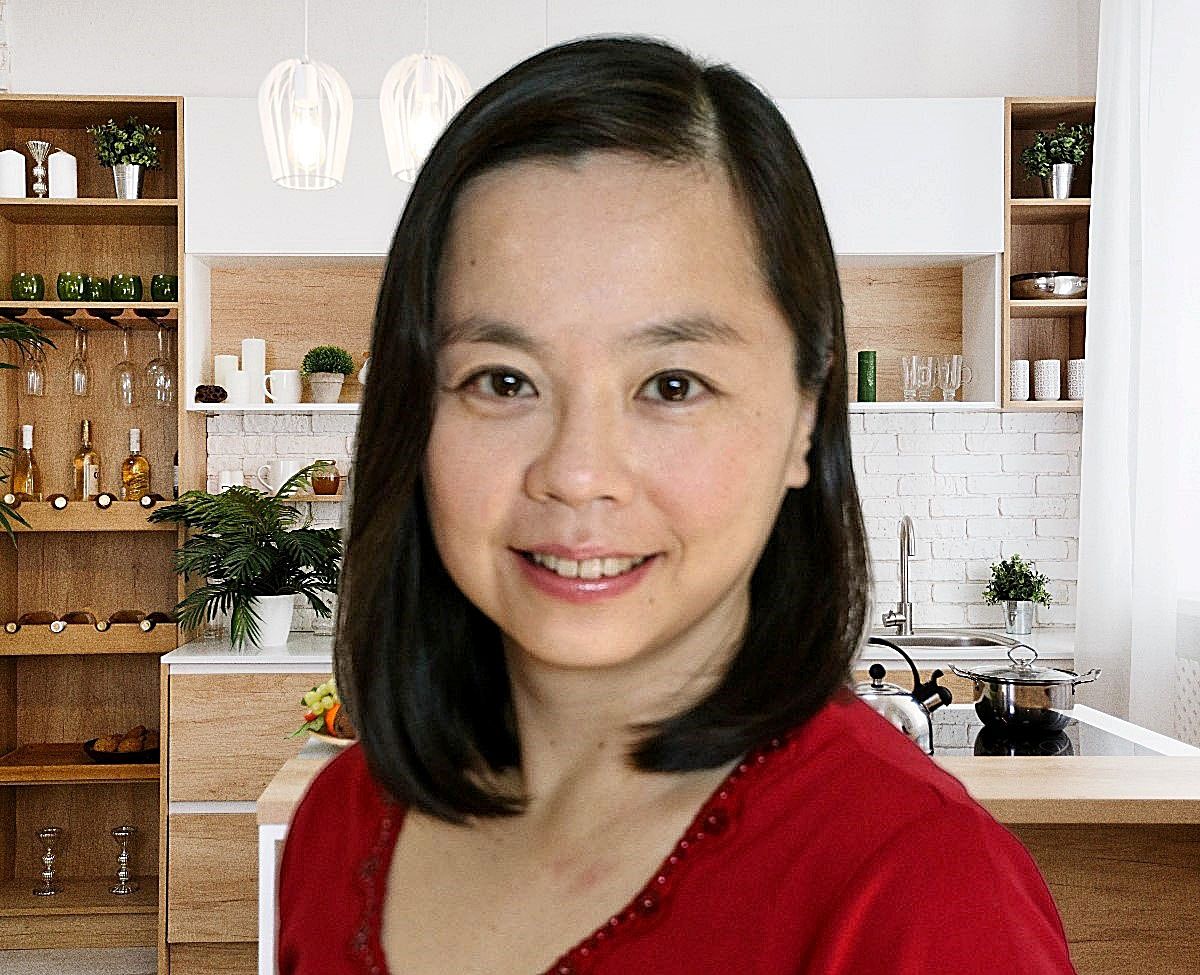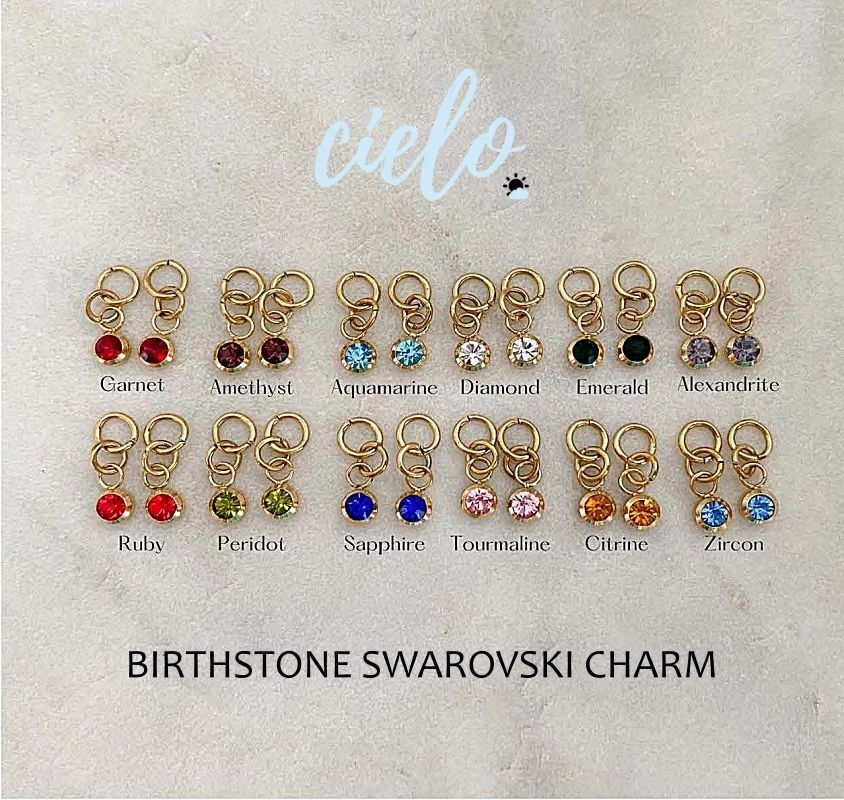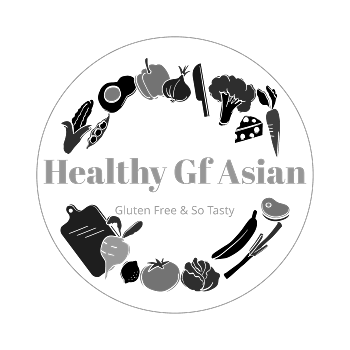This sweet Chinese dessert, Creamy Coconut Red Bean with Black Rice is very popular in China and South East Asia. I remember very fondly from my childhood my mum used to make this dessert on a regular basis. Enjoyed greatly by both our family and friends. In my gluten free version of this creamy coconut red bean with black rice dessert. Likewise, I am combining both red adzuki beans and black glutinous rice with creamy coconut. Plus mandarin orange juice and grated zest of mandarin orange skin as it is mandarin orange season now in Australia. Substitute for oranges if mandarin oranges are not in season in your country. My creamy coconut red bean with black rice recipe is not only gluten free. But also vegan, dairy free, nut free, soy free and egg free.
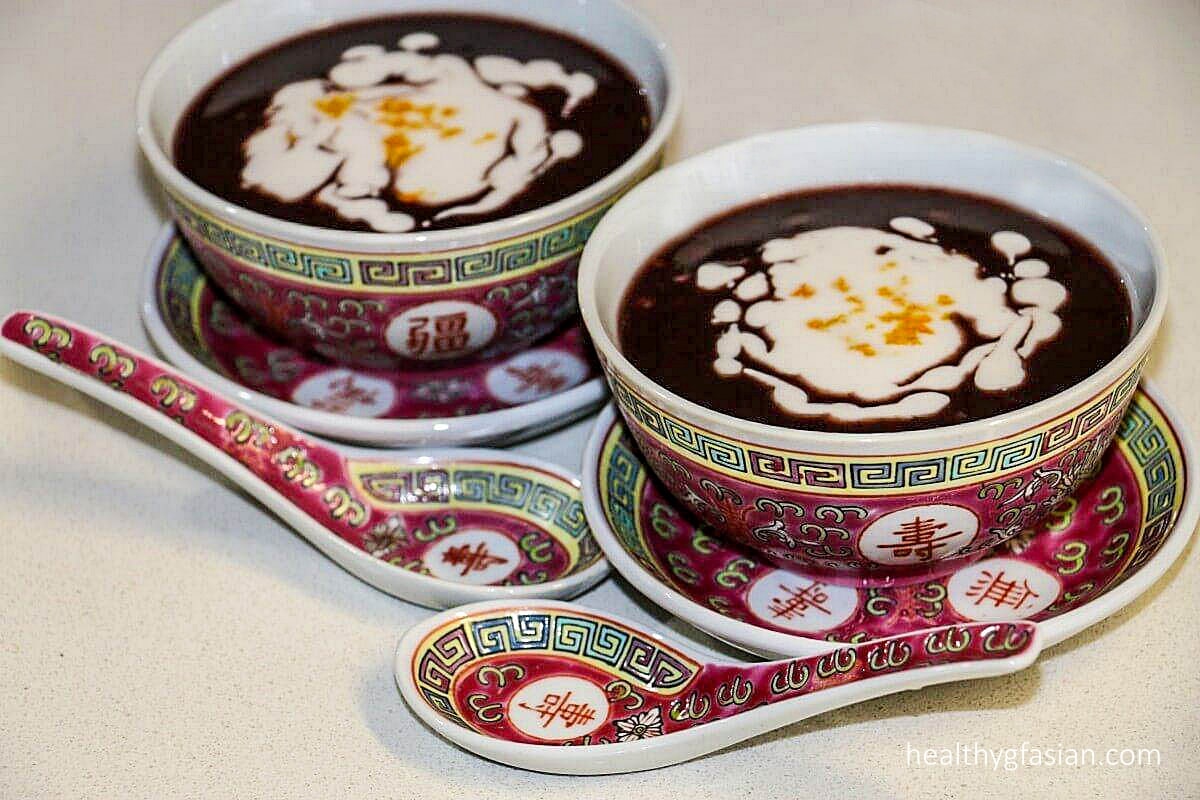
Culinary Uses of Red Adzuki Beans
Common ingredients used in Asian desserts include red adzuki beans and black glutinous rice. They often use them separately either as creamy coconut red bean or creamy coconut black glutinous rice. With dried mandarin skin or pandan leaves added for more flavours. Likewise, they often use red adzuki bean to make many different kinds of desserts. Some examples are steam red beans sweet bun, popsicles, ice creams. As a filling for sweet glutinous rice dumpling, coconut and red beans dessert drinks. Plus as accompaniment for ABC ice kacang, puddings, etc. Besides, I serve this dessert as a hot sweet dessert. But you can also serve it chilled. You may also like my gluten free baked Red Bean Paste Buns (Dou Sha Bao) recipe.
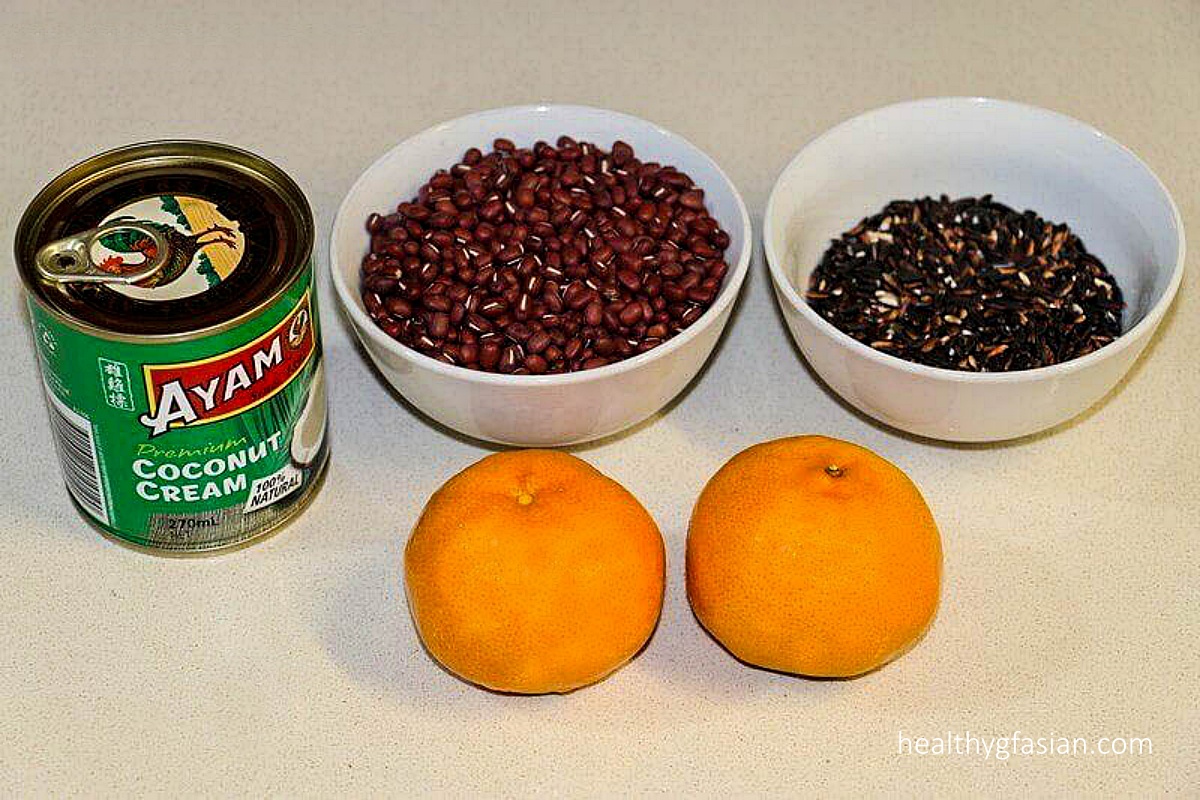
Nutritional Values and Health Benefits of Red Adzuki Beans
Furthermore, this desert is also very wholesome and beneficial to your health. Red adzuki beans belong to the group of pulses. Similarly termed legumes, which provide an assortment of phytonutrients that help combat illnesses. Likewise, red adzuki beans are small and sweeter in taste than other legumes. Besides, red adzuki beans are a good source of low-fat vegetable protein with loads of fiber, vitamins and minerals. It is an excellent source of zinc, iron, phosphorus, potassium and magnesium. Moreover, it also contains vitamin A and vitamin B9 (folate).
Additionally, they consider red adzuki beans as a healing food in tradition Chinese medicine. Practitioners use it for maintaining healthy functions of bladder, kidney and reproductive systems. Red adzuki beans may also prevent colon cancer, breast cancer and aid in weight loss.
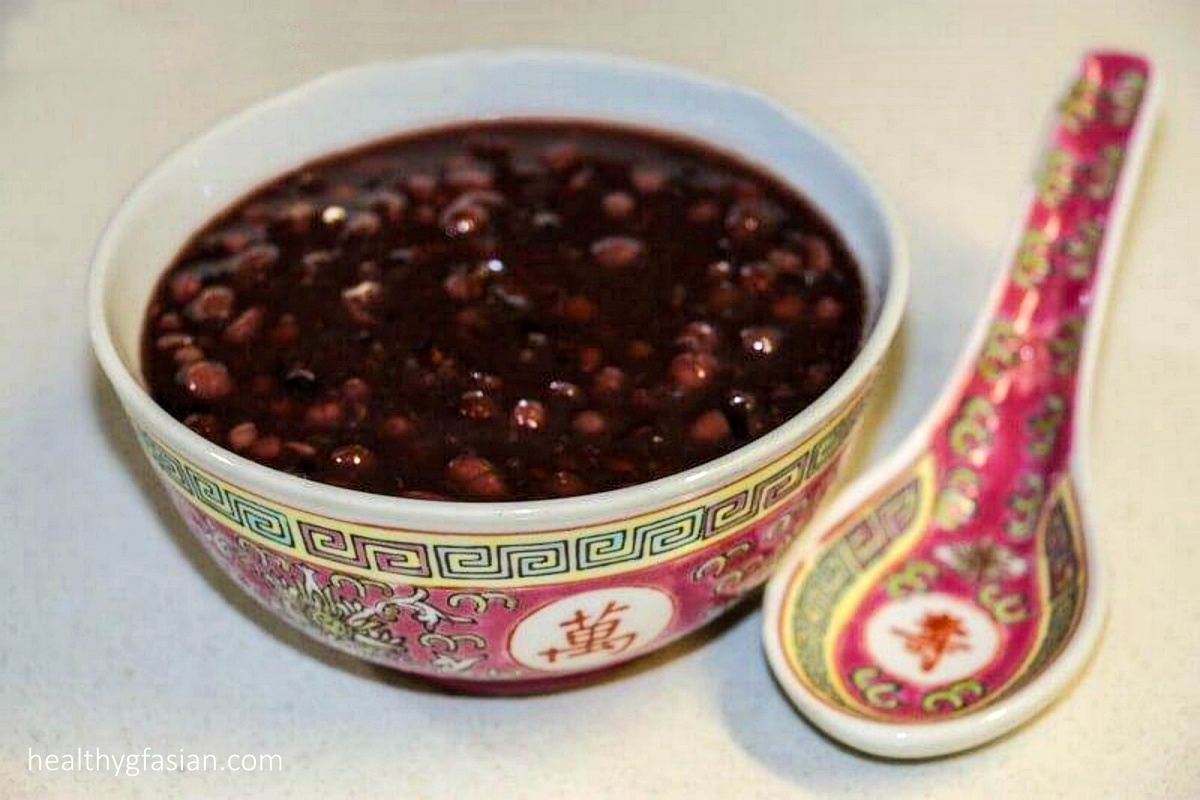
Nutritional Values and Health Benefits of Black Glutinous Rice
Black glutinous rice, or often called black sticky rice, also has a distinctive nutty flavour. When fully cooked, it is dark purple in colour. They also known it as “forbidden rice” as it was only available to the Chinese aristocrats. And not to the commoners during the ancient times. But they now grow it mainly in the Philippines and Indonesia, and available worldwide. Likewise, they consider black rice as even healthier than brown rice. As it has all the dietary benefits of brown rice but because of its dark colour. Besides, it is not only rich in iron, it also has potent antioxidants called anthocyanin. Commonly discovered in superfoods like blackberries and blueberries. Moreover, black rice may help prevent cancer and heart diseases. In addition, Japanese frequently use black rice to make sushi.
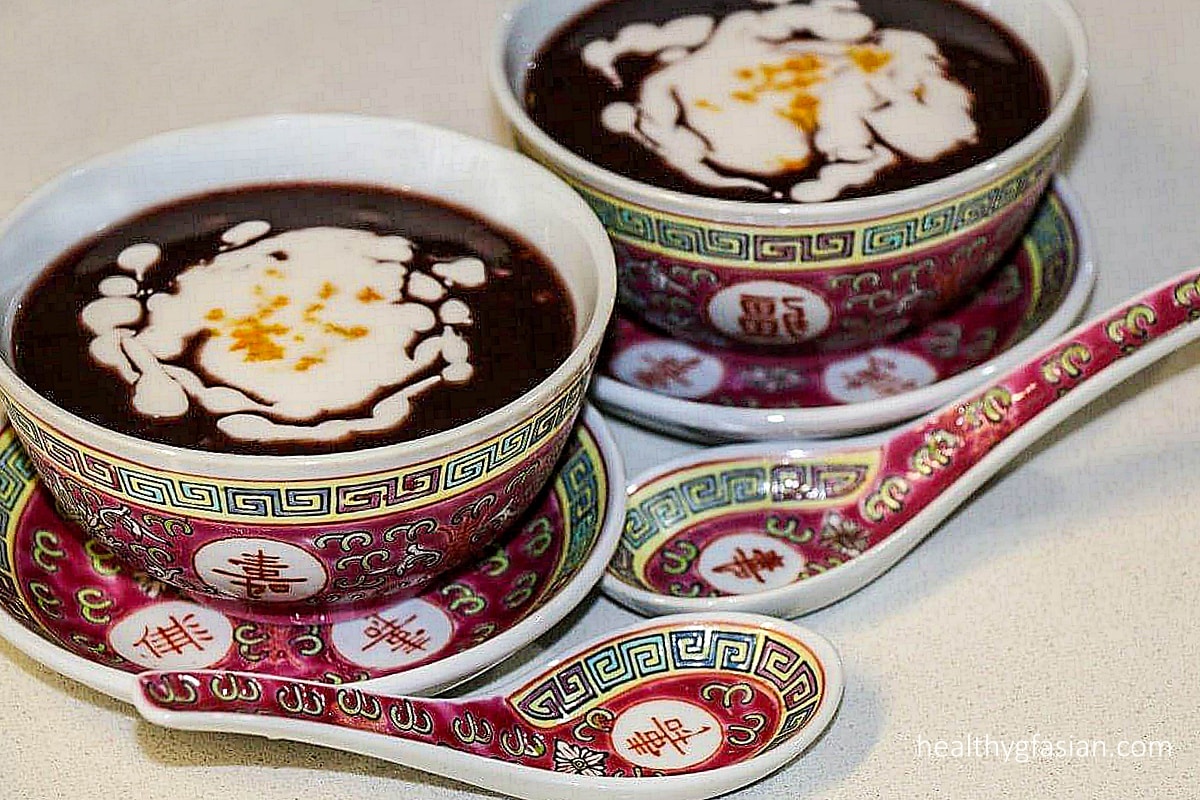
Creamy Coconut Red Bean with Black Rice
Ingredients
- 1 cup red adzuki beans soaked for 2 to 3 hours, washed and drained
- ½ cup black glutinous rice soaked for 2 to 3 hours, washed and drained
- 2 litres water
- ¾ cup raw brown sugar
- 270 ml gluten free coconut cream
- 3 mandarins skin grated zest (choose mandarins with firm skin). Substitute with orange skin if preferred.
- 3 mandarins peeled, deseeded, juiced and strained. Substitute with oranges if preferred.
Instructions
- Fill a medium pot with 2 litres of water. Add in the red adzuki beans and black glutinous rice and bring to a boil. Once its boiling, cover with lid and simmer on low heat for 1 hour.
- Peel and deseed the mandarins, juice in a blender and strained. Add the strained mandarin juice and raw brown sugar to the pot and continue to simmer for another 30 minutes or until the beans and rice are soft and the liquid thickens.
- Serve hot or warm, garnish with 2 to 3 tablespoons of gluten free coconut cream and some grated mandarin zest per serving.
- This dessert can also be served either hot or chilled if preferred.

